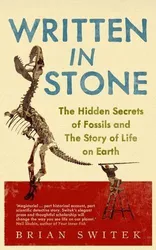This is a book about how examining the fossil record has led to an improved understanding of the world we live in and the animals that live within it, and particularly how it has developed over time.
One of the early topics covered is the development of the theory of evolution. I was surprised by how long incorrect beliefs persisted among scientists, even after the idea of evolution itself was accepted. Before On The Origin of Species was published, it was common to assume that god created everything, or at least that organisms developed under some kind of supernatural guidance. But even afterwards, and well into the 20th century, there were ideas around creatures moving towards “higher” or more sophisticated forms, driven by some kind of internal force towards greater function or complexity, instead of the truth that species are shaped by the environment that they find themselves in. Without an environment that rewarded the brain development required to support creative problem solving and social structures, for example, our ancestors wouldn’t have developed the intelligence that we now have.
Although the book’s subtitle suggests it might include the story of all life, the author ignores plants and fungi and focuses almost exclusively on animals. So after evolution has been introduced, the book focuses on one section of the animal kingdom at a time, exploring how we came to answer particular questions about the evolutionary history of these animals through the fossil record. For example, how did birds evolve? How did whales evolve, and which land dwelling mammals are they most closely related to? And how did humans evolve? With all the historical wrong turns taken during these sections it paints a less clear picture than some other books, but the author does take time to explain the currently accepted theory about the origins of each of these animals at the end of each chapter.
The book is primarily focused on fossils. So while the answers to some of these questions were resolved or illuminated with the help of molecular techniques that look directly at the DNA of animals (both living and obtained from fossils), the author largely tells the story through the fossils that were discovered and how they were interpreted. Similarly, although some mention is made of the radiometric dating techniques that allow us to work out how old fossils are, the book doesn’t go into much detail about how these techniques have been used. Depending on what period they were working in, some of the palaeontologists had access to these techniques and some didn’t. The earlier palaeontologists were essentially guessing as to the age of the fossils they found, and it’s not clear from the book how much these newer techniques improved our ability to interpret the fossil record. I would have liked more clarity from the book on this topic.
A lot of the same characters recur throughout this book, particularly during the Victorian era when the fossil experts of the day weren’t specialised on one particular type of fossil as they would be today. So Darwin, of course, but also Thomas Henry Huxley, Richard Owen and Charles Lyell make frequent appearances throughout the book. These characters were conveyed well and I enjoyed reading about them, their contributions, and the things they misunderstood or got wrong!
My copy (published in 2012) had an unusual number of typographical mistakes in it. None of these were critical in terms of understanding what the author intended to say, but it was surprising. Nevertheless, this was a really interesting book to read, and I got a lot out of it.
